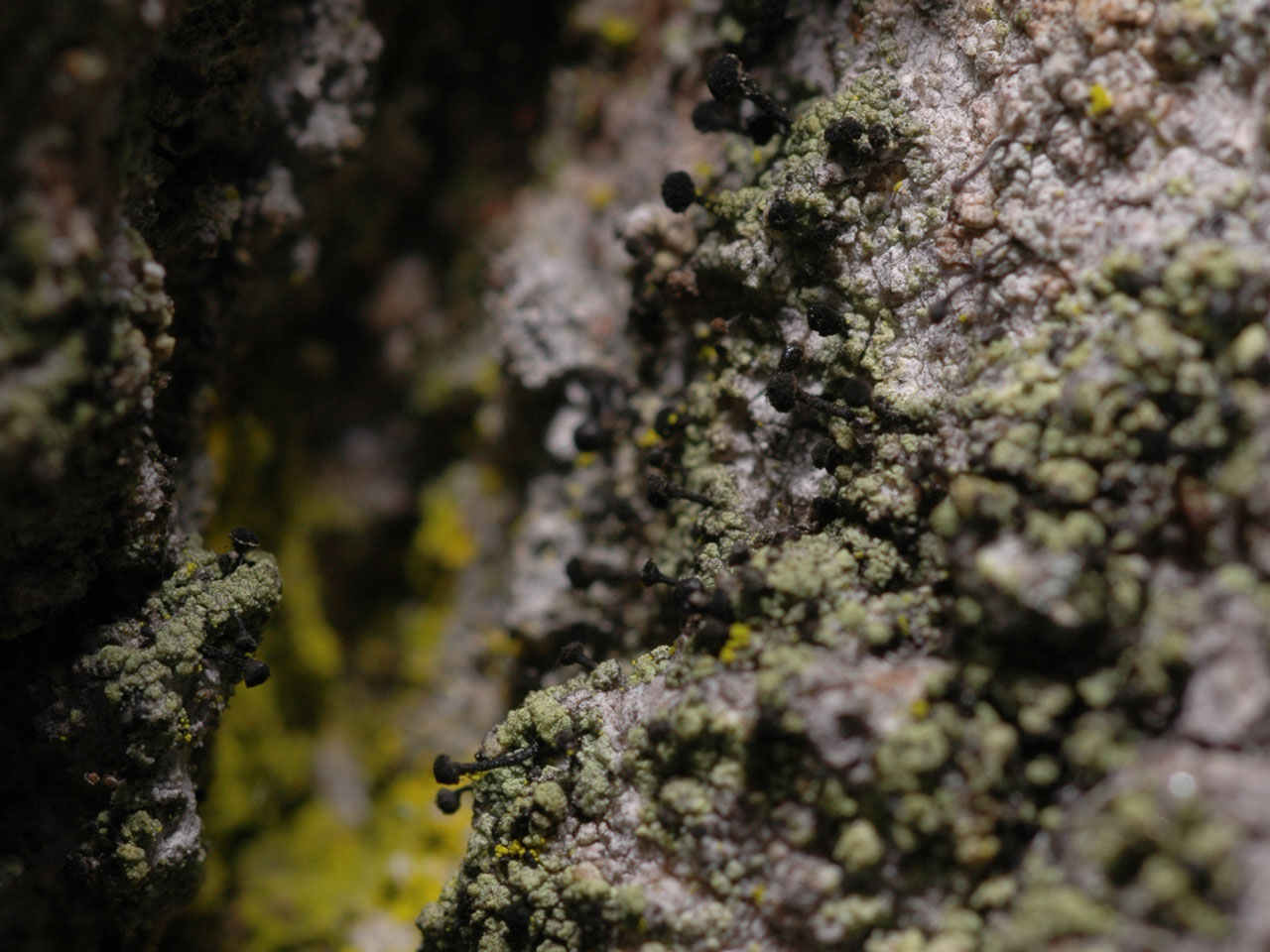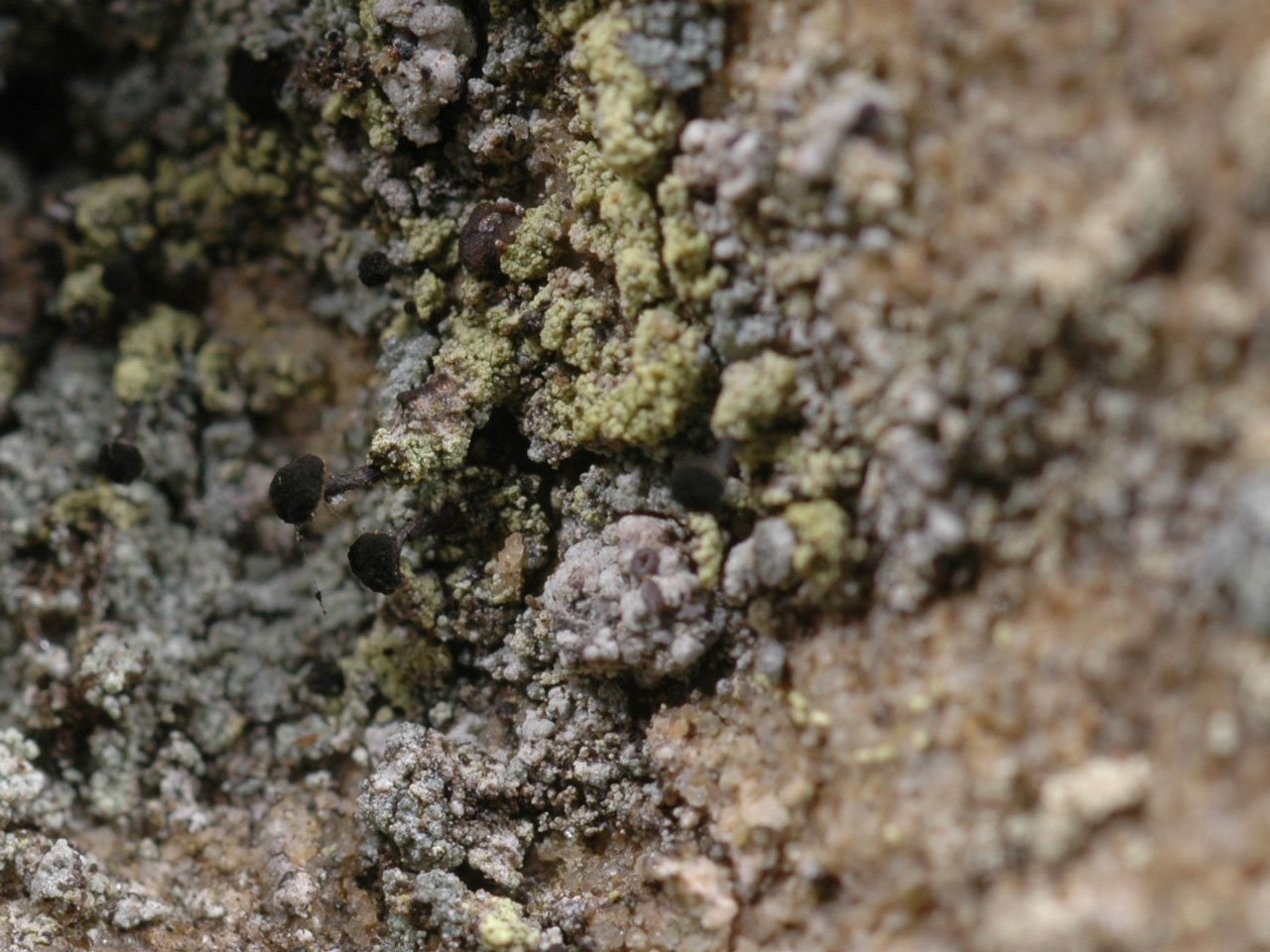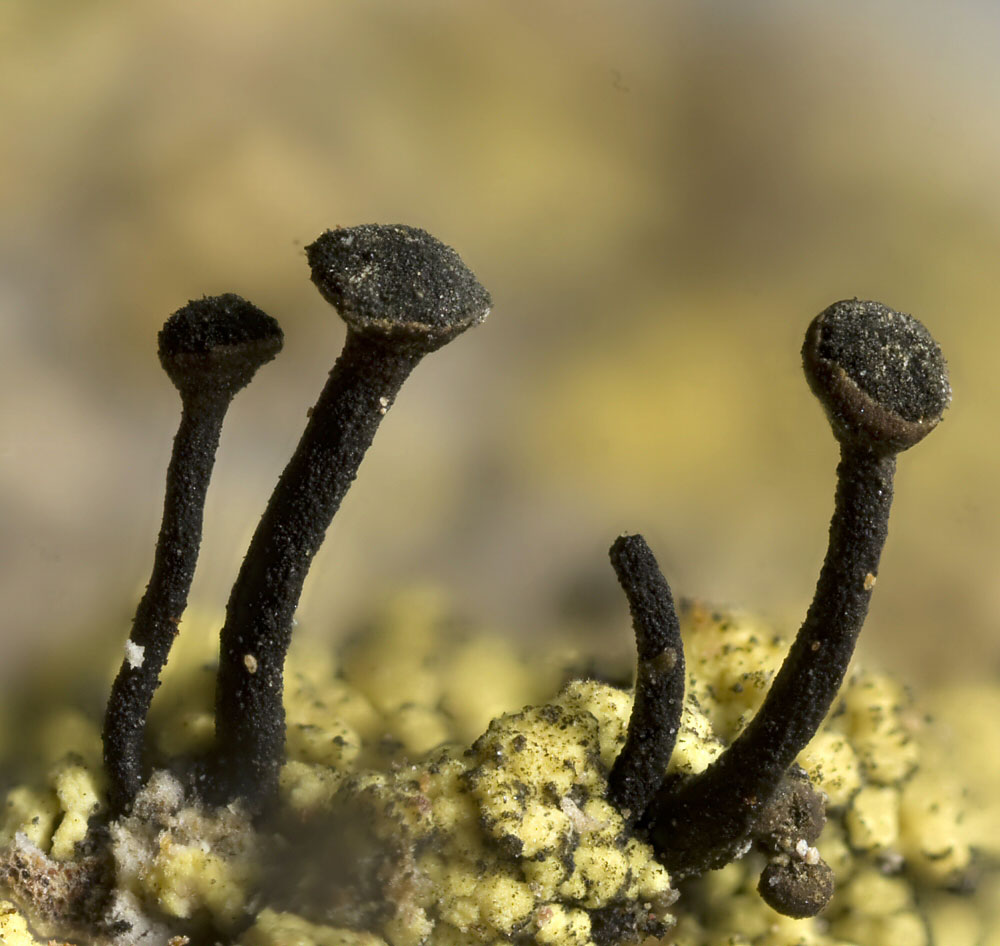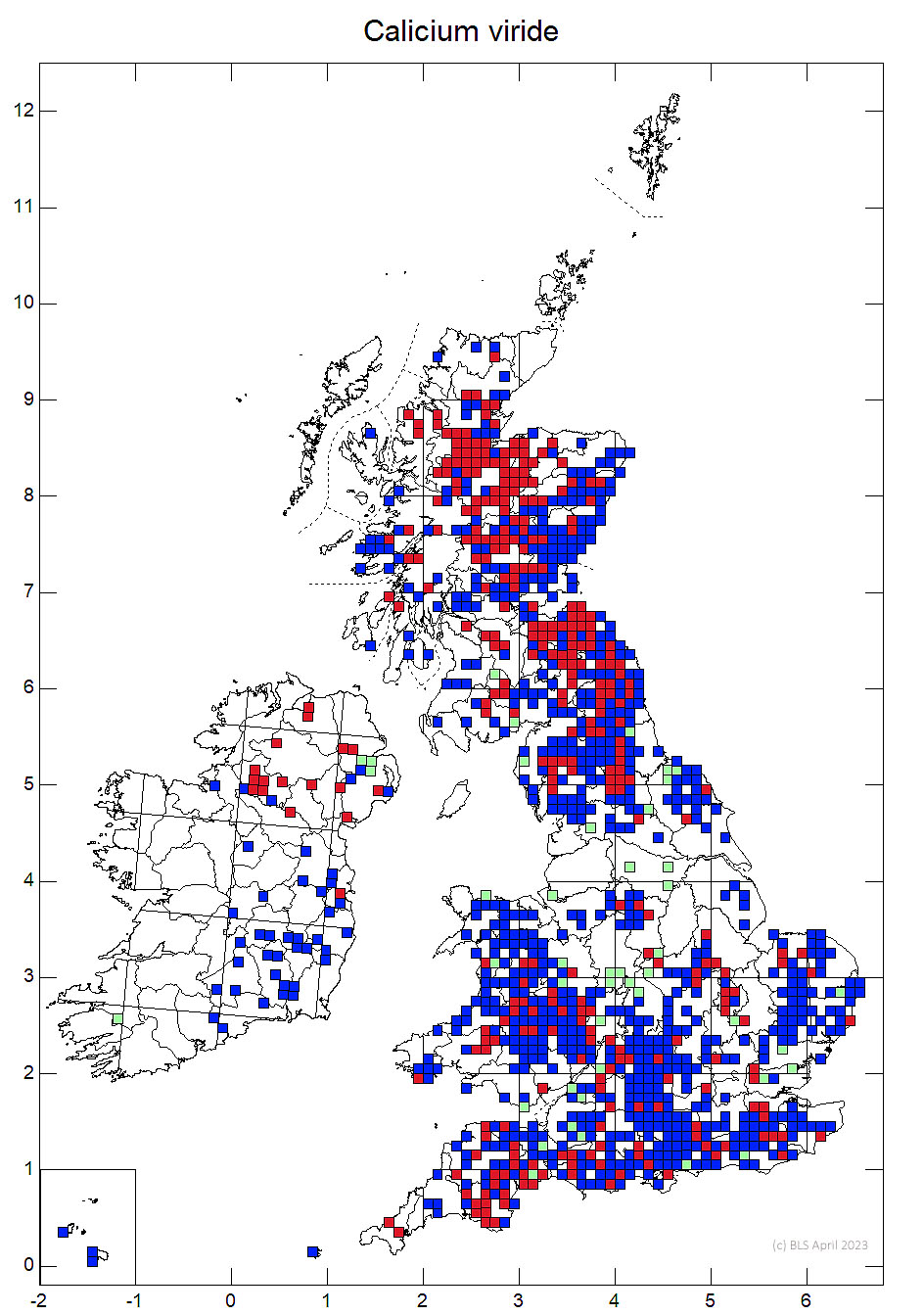A Pinhead with a black mazaedium (a loose spore mass, which makes sooty marks on one’s fingers if touched) on a tall stalk over a bright green granular thallus. Brown pruina on the lower surface of the head are a distinctive feature. Found dry acid wood and bark and rarely stone. This species is tolerant of acidification and became frequent in moderately sulphur dioxide polluted areas. It has since declined markedly in the south as acidifying pollution declined.
Thallus granular, usually well-developed, bright green. Apothecia (0.3–) 0.6–1.9 mm tall, mostly 9–16 times as high as the width of the stalk, black, I–; head 0.14–0.7 mm diam., often with a brown pruina on the lower surface; stalk 40–160 µm diam. Asci clavate. Ascospores 11–13.5 × 6–7 µm, biseriately arranged, commonly constricted at the septum when mature, with deep, irregular cracks. Contains rhizocarpic acid and epanorin.
Recognised by the bright green thallus. Some specimens with an immersed thallus and well-developed brown pruina on the lower side of the head may resemble Calicium salicinum, which has cylindrical asci and smaller ascospores wwith spirally arranged ridges.
On wood and dry, acid bark, rarely on siliceous rocks below overhangs when the apothecial stalks tend to be shorter; was very common, but appears to have strongly declined in the south in formerly acidified areas as the levels of pollution reduced, always rarer in the west.

Throughout Britain and eastern Ireland.
This Pinhead, although absent from the strongest areas of sulphur dioxide pollution, was very tolerant and became frequent in moderately polluted areas. It has since declined markedly in the south as habitats deacidified as pollution declined. The decline is enough to qualify as a Red List species, although this may not be applicable as its former abundance was at least partly due to anthropogenic pollution.
Cannon, P., Prieto, M., Coppins, B., Sanderson, N., Scheidegger, C. & Simkin, J. (2021). Caliciales: Caliciaceae, including the genera Acolium, Amandinea, Buellia Calicium Diploicia, Diplotomma, Endohyalina, Monerolechia, Orcularia, Pseudothelomma, Rinodina and Tetramelas. Revisions of British and Irish Lichens 15: 1-35.
Text by Neil A Sanderson, based Cannon et al (2021)



